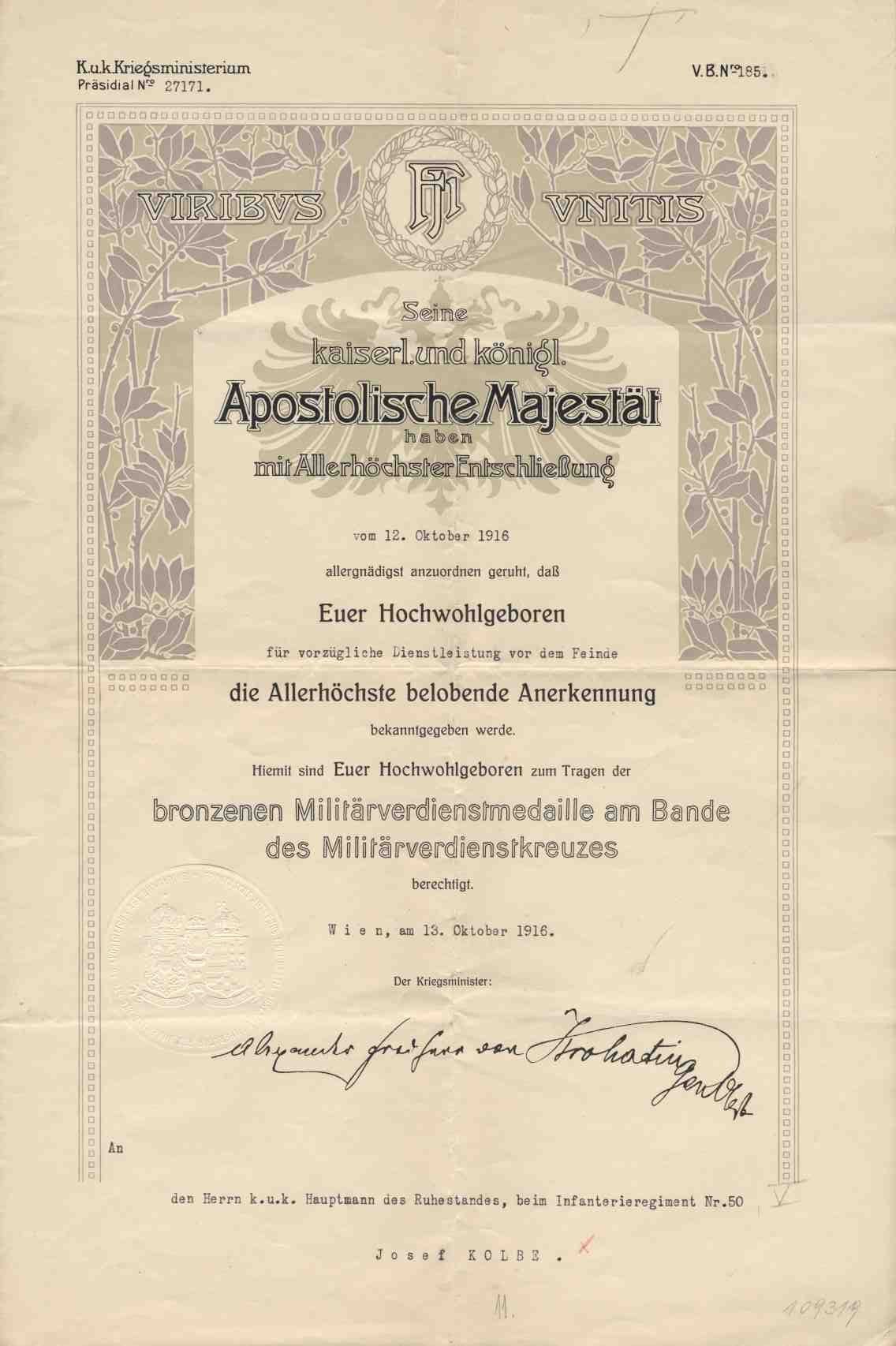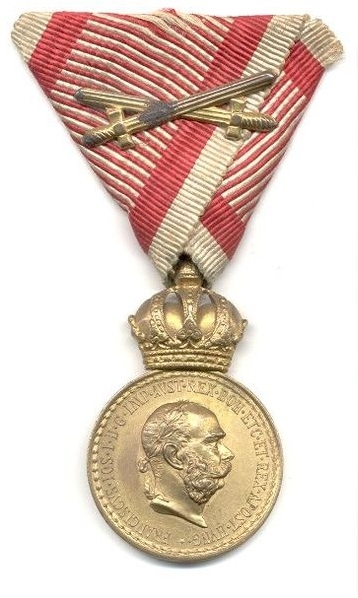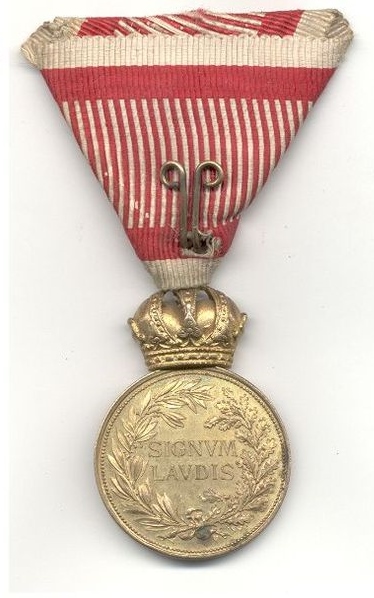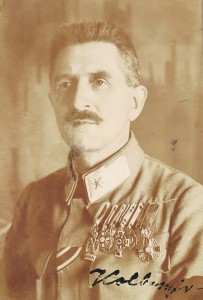The original Military Merit Medal was instituted by Emperor Franz Joseph on 12 March 1890 in recognition of outstanding achievements by commissioned officers in wartime and excellent service by officials of similar rank in peacetime. It was commonly known as the Signum Laudis (sign of praise) after the inscription on the reverse.
The original medal was made of gilt bronze, depicting the Emperor’s head in profile surrounded by the inscription FRANCISCVS•IOS•I•D•G•IMP•AVST•REX•BOH•ETC•ET•REX•APOST•HVNG on the obverse, and the words SIGNVM LAVDIS within a laurel branch, left, and an oak branch, right, on the reverse. The medal was surmounted by the imperial crown and, for military personnel, suspended on the tri-fold ribbon of the Bravery Medal, which is white with a centre design of red and white horizontal stripes bordered by two red vertical stripes.
On 26 March 1911 a further Military Merit Medal was sanctioned for repeated actions worthy of royal praise. It was the same as the bronze medal but made of silver and outranked the latter, as the original intention was for the silver award to replace the bronze, though the wearing of both was permitted from 7 April 1914 onwards. Gold crossed swords were awarded from 13 December 1916 in recognition of distinguished wartime service and worn on the ribbon.
Major Josef Kolbe received the bronze Military Merit Medal on 13 October 1916. The application for it was submitted by the High Command for Construction for outstanding services before the enemy while serving with the German Army of the Bug. The ribbon on his medal ribbon bar bears the crossed swords, which were presumably awarded at a later date.
Sources:
War Archives, Vienna: http://www.oesta.gv.at/site/6154/default.aspx
http://www.austro-hungarian-army.co.uk/signum.htm
http://en.wikipedia.org/wiki/Military_Merit_Medal_(Austria-Hungary)
http://de.wikipedia.org/wiki/Militär-Verdienstmedaille_(Österreich)





